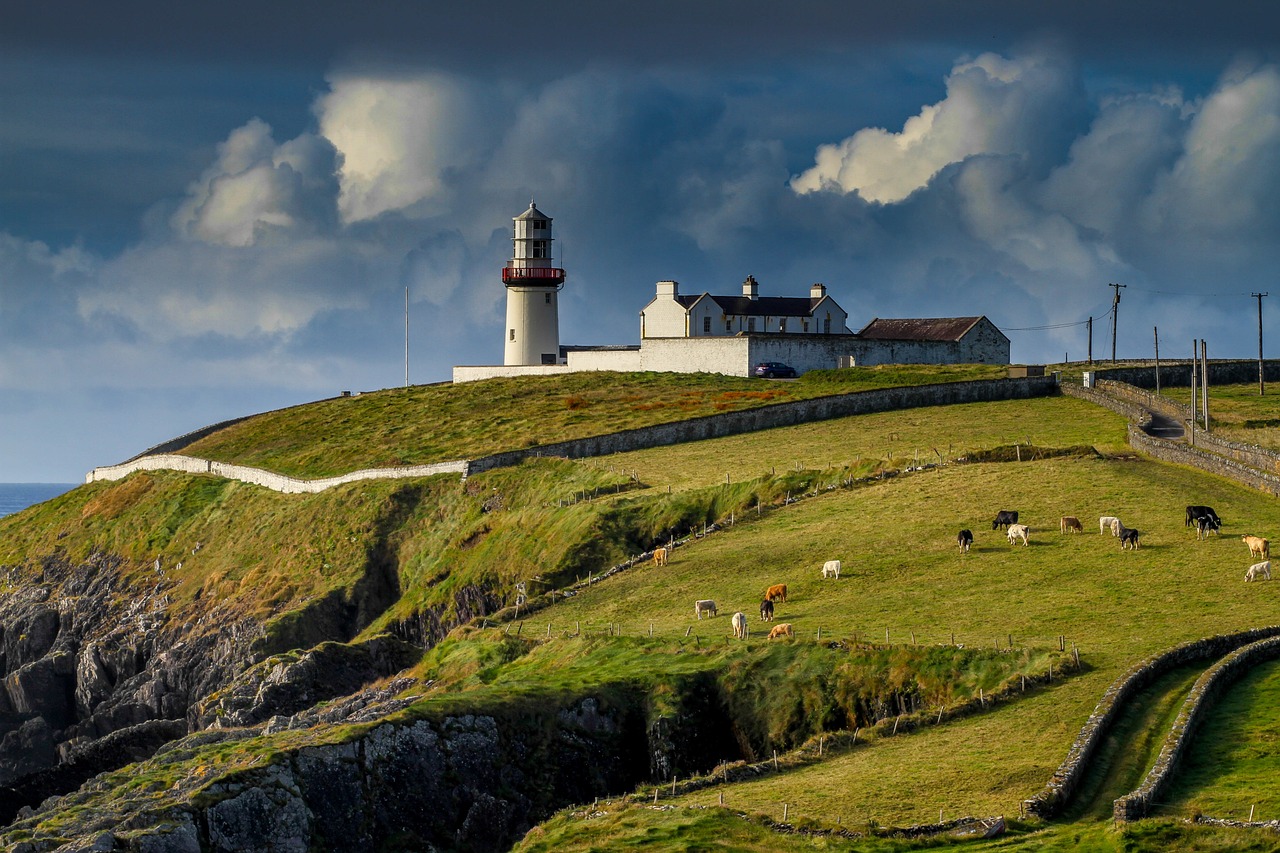
Ireland, often referred to as the Emerald Isle, is a land of breathtaking landscapes, rich history, and vibrant culture. From its rugged coastlines and lush green countryside to its lively cities and warm, welcoming people, Ireland offers a diverse and unforgettable travel experience. This guide provides essential information for anyone planning to visit Ireland, covering everything from top attractions and cultural highlights to practical travel tips.
Top Attractions
- Dublin
- Trinity College and the Book of Kells: Home to Ireland’s oldest university and the magnificent Book of Kells, a beautifully illuminated manuscript dating back to the 9th century.
- Guinness Storehouse: A must-visit for beer lovers, this seven-story museum offers a fascinating look at the history and brewing process of Ireland’s iconic stout.
- Temple Bar: A vibrant cultural quarter known for its cobblestone streets, bustling pubs, live music, and artistic atmosphere.
- Cliffs of Moher
- Located on the west coast, these dramatic cliffs offer stunning views over the Atlantic Ocean. The Cliffs of Moher are one of Ireland’s most visited natural attractions, stretching for about 14 kilometers and reaching heights of 214 meters.
- Ring of Kerry
- This scenic drive through County Kerry showcases some of Ireland’s most beautiful landscapes, including rugged coastlines, charming villages, and lush forests. Highlights include Killarney National Park, the Gap of Dunloe, and the picturesque town of Kenmare.
- Galway
- Known for its vibrant arts scene and bohemian spirit, Galway is a lively city on the west coast. Explore the colorful Latin Quarter, visit the historic Spanish Arch, and enjoy traditional Irish music in one of the many pubs.
- Giant’s Causeway
- A UNESCO World Heritage Site located in Northern Ireland, the Giant’s Causeway features about 40,000 interlocking basalt columns, the result of an ancient volcanic eruption. The site is steeped in legend, with stories of giants using the columns as stepping stones.
- Belfast
- The capital of Northern Ireland, Belfast is a city with a rich industrial heritage and a vibrant cultural scene. Key attractions include the Titanic Belfast museum, the historic Crumlin Road Gaol, and the beautiful Botanic Gardens.
Cultural Highlights
- Traditional Music and Dance
- Experience the heart of Irish culture through traditional music and dance. Many pubs, especially in the west of Ireland, host live music sessions where you can enjoy instruments like the fiddle, tin whistle, and bodhrán. Riverdance shows offer a spectacular display of Irish dance.
- Literary Heritage
- Ireland has a proud literary tradition, home to renowned writers such as James Joyce, W.B. Yeats, and Samuel Beckett. Visit the Dublin Writers Museum, the James Joyce Centre, and attend literary festivals such as the Listowel Writers’ Week.
- Festivals
- Ireland hosts numerous festivals throughout the year. St. Patrick’s Day on March 17th is the most famous, celebrated with parades, music, and dance. Other notable festivals include the Galway International Arts Festival, the Cork Jazz Festival, and the Puck Fair in Killorglin.
Practical Travel Tips
- Best Time to Visit
- The best time to visit Ireland is from late spring to early autumn (May to September), when the weather is mild and the days are long. July and August are the warmest months but also the busiest. For fewer crowds, consider visiting in late spring (May and June) or early autumn (September).
- Transportation
- Car Rental: Renting a car is a great way to explore Ireland’s countryside and coastal routes at your own pace. Driving is on the left side of the road.
- Public Transport: Ireland has a reliable public transport system, with trains and buses connecting major cities and towns. The Dublin Area Rapid Transit (DART) is convenient for getting around Dublin and its suburbs.
- Cycling: Ireland’s scenic routes are perfect for cycling enthusiasts. Many towns offer bike rentals, and there are numerous dedicated cycling paths.
- Accommodation
- Ireland offers a wide range of accommodation options, from luxury hotels and cozy bed-and-breakfasts to budget hostels and self-catering cottages. Staying in a traditional Irish B&B provides a unique and personal experience, often with a hearty Irish breakfast included.
- Food and Drink
- Irish Cuisine: Try traditional dishes such as Irish stew, soda bread, and colcannon (mashed potatoes with cabbage). Seafood is also popular, particularly in coastal areas.
- Pubs: Visiting an Irish pub is a must. Enjoy a pint of Guinness or try local craft beers. Many pubs also serve delicious meals and host live music sessions.
- Whiskey: Ireland is famous for its whiskey. Visit distilleries such as Jameson in Dublin or Bushmills in Northern Ireland to learn about the distillation process and enjoy tastings.
- Cultural Etiquette
- Greetings: A friendly handshake is common. Irish people are generally polite and enjoy engaging in conversation.
- Tipping: Tipping is appreciated but not mandatory. In restaurants, a tip of 10-15% is customary if service is not included. For taxi drivers and hotel staff, rounding up the fare or leaving a small tip is common.
- Language
- English is the predominant language spoken in Ireland. Irish (Gaelic) is also an official language and is used in some areas, particularly in the Gaeltacht regions. Road signs are bilingual, and learning a few basic Irish phrases can be appreciated by locals.
Conclusion
Visiting Ireland is an enriching experience that combines natural beauty, cultural depth, and warm hospitality. Whether you’re exploring historic sites, marveling at scenic landscapes, or enjoying a lively pub session, Ireland offers something for every traveler. With this guide, you’re well-equipped to make the most of your trip to the Emerald Isle, ensuring a memorable and enjoyable visit.
Thank you for every other great post. The place else may just anybody get that type of info in such an ideal way of writing? I have a presentation subsequent week, and I am on the look for such info.